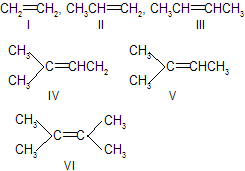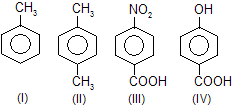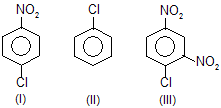General Series - Chemistry Fact Sheet - 3
General Series - Chemistry Fact Sheet - 3
| 1. |  |
There is intermolecular H-bonding I. III has weak force of attraction and is most volatile. | |
| 2. | B.P. of o, m, p-nitro phenol | Intramolecular H-bonding in o-isomer makes it more volatile. | |
| 3. | Reactivity of ... with Tollen’s reagent |
—CHO group is easily oxidised compared to keto group due to redusing hydrogen. |
|
| 4. | Reactivity of ... with Fehling’s solution |
—do— | |
| 5. | Extent of hydration of |
Aldehydes are more hydrated than ketones. Halide makes C of carbonyl group more electropositive. | |
| 6. | Electrophilic nature of ........ for nucleophilic attack |
CH3 group decreases +ve charge on C hence nucleophilic attack. | |
| 7. | Reactivity of isomeric 1°, 2°, 3° butyl halide towards elimination (E1 or E2) | due to stability of intermediate carbocation | |
| 8. | Dehydration of |
Alcohol leading to increase in conjugation due to dehydration is more easily dehydration is more easily dehydrated. IV is vinylic, hence least. | |
| 9. | Stability of | ||
 |
< V < VI |
Substituted alkenes are more stable.More the alkyl groups are attached to the doubly bonded carbon atom more is the stability. |
|
| 10. | Stability of |
II is more substituted than III (More hyperconjugation more stability) | |
| 11. | Stability of |
IV is vinylic while in conjugative, II allylic. | |
| 12. | Stability of |
III is 3° allylic and II is 1° allylic | |
| 13. | Dehydration of |
More the stability of intermediate, greater the reactivity of chemical reaction. | |
| 14. | Boiling points of |
I, II have H-bonding but electronegativity of O > N hence H-bonding in II > I | |
| 15. | Formation of |
(easiest I) |
greater the stability, easier the formation of perticular species. |
| 16. | Reactivity of C—H bond (abstraction of H) | ||
 |
< V < VI |
Vinyl < methyl 1° < 2° < 3° < allylic | |
| 17. | Leaving nature (tendency) of ... in SN reaction. |
< V < VI < VII < VIII |
If acid is strong, its conjugate base is weak and greater the leaving tendency. |
| 18. | Rate of esterification of the following acids with MeOH |
> V |
As the size of the substituents on the |
| 19. | Relative reactivity of ... with electrophile in SE reaction |
||
 |
> III > V |
—CH3 is o-, p-directing and responsible for activation. | |
| 20. | Relative reactivity of these compunds with electrophile inSE reaction |
—CH3 is o-, p-directing due to activation while —COOH is m-directing and deactivating group. | |
| 21. | Relative reactivity of ... with electrophile in SE reaction. |
As the number of sp3 hybridised C atoms separating the ring from the positively charged substituent increases, deactivating effect decreases due to less electronegativity. | |
| 22. | Activating effects of the following o, p-directors. |
||
| 23. | Relative reactivity of ... towards SN1 reaction |
Intermediates are benzylic cations. So CH3O(electron repelling) gives greater stability through delocalisation while NO2 (electron attracting) decreases stability. | |
| 24. | Relative reactivity of ... towards SN1 and SN2 reaction |
II < II < I |
SN1 : 1° < 2° < 3° alkyl halide SN2 : 3° < 2° < 1° alkyl halide |
| 25. | Relative reactivity of ... with E+ (electrophile) in SE reaction. | —NO2 deactivates benzene ring for SE | |
 |
|||
| 26. | Order of SN2 reactivity of alkoxide nucleophiles | ||
 |
< II |
SN2 reactivity is suseptible to steric hindrance by the nucleophile as well as by the size of alkyl group. |